Written 1916 Composer Igor Stravinsky Language Russian | First performance 18 May 1922 Librettist Igor Stravinsky | |
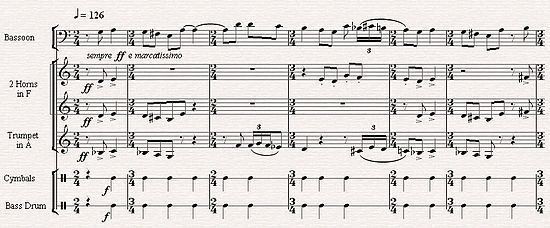 | ||
Similar Mavra, The Nightingale, The Flood, Perséphone, Oedipus rex | ||
Renard, Histoire burlesque chantée et jouée (The Fox: burlesque tale sung and played) is a one-act chamber opera-ballet by Igor Stravinsky, written in 1916. The Russian text by the composer was based on Russian folk tales from the collection by Alexander Afanasyev.
Contents

The full Russian name of the piece is: Ба́йка про лису́, петуха́, кота́, да барана́. Весё́лое представле́ние с пе́нием и му́зыкой – (Bayka pro lisu, petukha, kota da barana. Vesyoloe predstavlenie s peniem i muzykoi – The Fable of the Vixen, the Cock, the Cat and the Ram. A burlesque for the stage with singing and music).
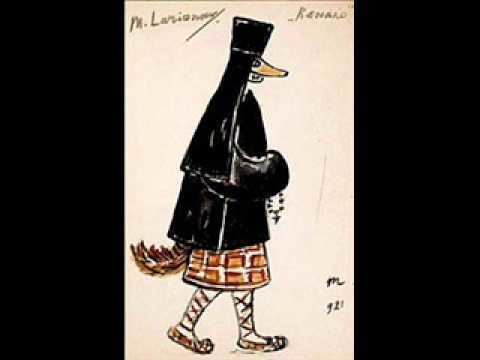
History
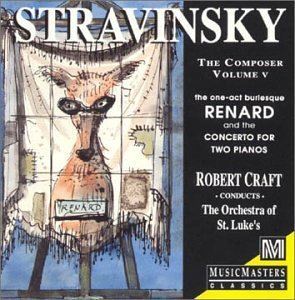
In April 1915 Winnaretta Singer, aka la Princesse Edmond de Polignac, commissioned Stravinsky to write a piece that could be played in her salon. She paid the composer 2,500 Swiss francs. The work was completed in Morges (Switzerland) in 1916, and Stravinsky himself made a staging plan, trying to avoid any resemblance to the operatic staging or conventions. He created rather a new form of theatre in which the acrobatic dance is connected with singing, and the declamation comments on the musical action. However the piece was never performed in the salon of the princess. It was not staged until 1922.
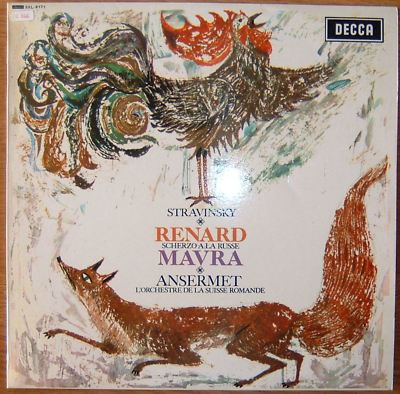
The premiere (a double bill with Mavra) was given on May 18, 1922 by the Ballets Russes at the Théâtre de l’Opéra, Paris It was conducted by Ernest Ansermet; the choreography was by Bronislava Nijinska and the decorations and costumes were by Mikhail Larionov. Stravinsky remained pleased with Nijinska's "acrobatic Renard, which coincided with my ideas...Renard was also a real Russian satire. The animals saluted very like the Russian Army (Orwell would have liked this), and there was always an underlying significance to their movements."
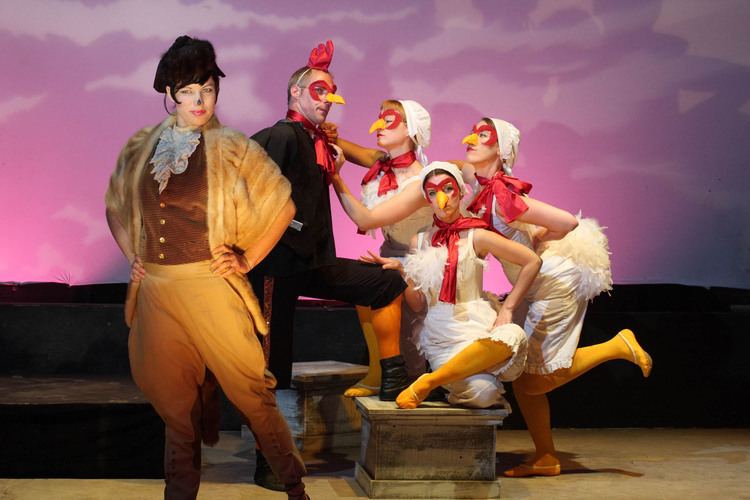
In 1929 Diaghilev staged a revival with the Ballets Russes, choreographed by Michel Fokine. "[It] was ruined chiefly by some jugglers Diaghilev had borrowed from a circus" Stravinsky regretted Chagall's refusal of a commission to do the sets.
Synopsis
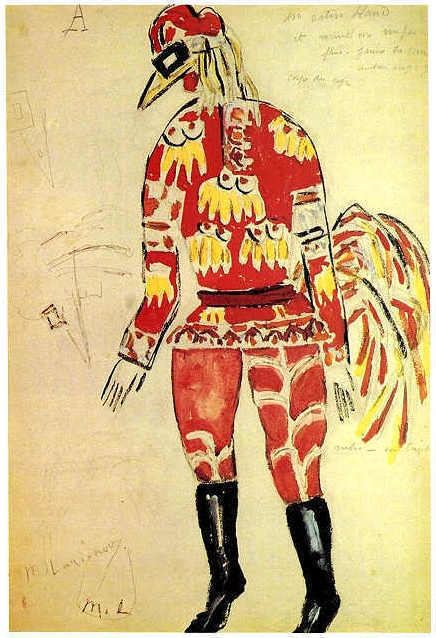
This is a moralizing story, a farmyard fairy tale about Reynard the Fox who deceives the Cock, the Cat and the Ram, but at the end they catch and punish him. The Cock is twice tricked and captured by the Fox, only to be rescued each time by the Cat and the Ram. After the Cock's second rescue, the Cat and the Ram strangle the Fox, and the three friends dance and sing. It also contains a slight irony relating to religion and the church – to be invulnerable the Fox wears the black gown of the nun (nuns used the privilege of inviolability in Russia).
As later in his Les noces (or Russian:Свадебка, 1914–17) Stravinsky employs here the singers as part of the orchestra, and the vocal parts are not identified with specific characters.
Publication
Geneva: A. Henn, ©1917; London: J. & W. Chester, ©1917; Vienna: Wiener Philharmonischer Verlag. ©1917; (as Bajka: veseloe predstavlenie s peniem i muzykaj) Moscow: Muzyka, 1973.
Duration c. 15–20 minutes.
Dedication: “Très respectueusement dédié a Madame la Princesse Edmond de Polignac”
Scoring
Singers: 2 tenors, 2 basses
Ensemble: flute (doubling piccolo), oboe (doubling cor anglais), clarinet (doubling Eb clarinet), bassoon, 2 horns, trumpet, percussion (timpani, triangle, tambourine with bells, tambourine without bells, cylindrical drum, cymbals, bass drum), cimbalom (or piano), 2 violins, viola, cello and double-bass.
Translations
The French translation by C. F. Ramuz appears in the original vocal score. A German translation by Rupert Koller is in the Chester study score and an English translation by Rollo H. Myers in the current vocal score bears the copyright date 1956. It is somewhat modified on the Stravinsky conducts Stravinsky recording; a more though-going revision heard on Robert Craft's 2005 recording is offered as the composer's own. Later, however, he told Craft: "I prefer to hear [it] in Russian or not at all."
Errata
There are many discrepancies between full and vocal scores, the most startling being the PV's extra bass drum beat at the beginning, the study score's downbeat at the start of the allegro (not heard on Stravinsky's recording), the rebarring between figures 21 and 22, and the PV's missing third beat of the bassoon before figure 24.
Score and music sample
Stravinsky first developed here an original technique of composition that was almost unknown in the European classical tradition, though quite typical of folk music. The main features of this are the repetition of small, simple melodic phrases (called in Russian «попевки» – popevki), often in syncopated rhythm, with an irregular meter (changing the time signature almost in every bar); the multi-voiced texture is not a real polyphony, but rather a heterophony, representing monophony or a “ragged unison”, where the melody of one instrument is accompanied and embellished with the fragments of the same melody. Here is the most telling example:
Recordings
key: conductor – coq (tenor 1)/renard (tenor 2)/chat (bass 1)/chèvre (bass 2) – year recorded - first label
